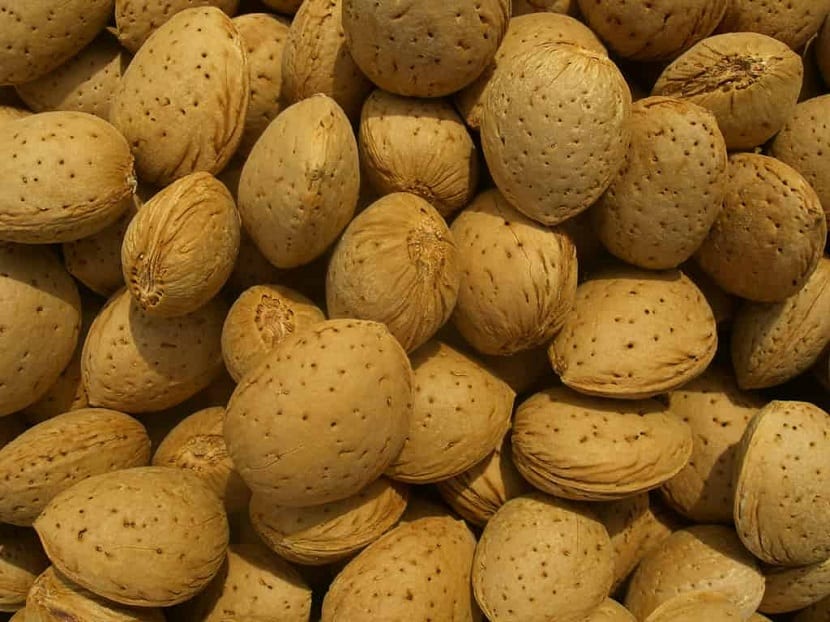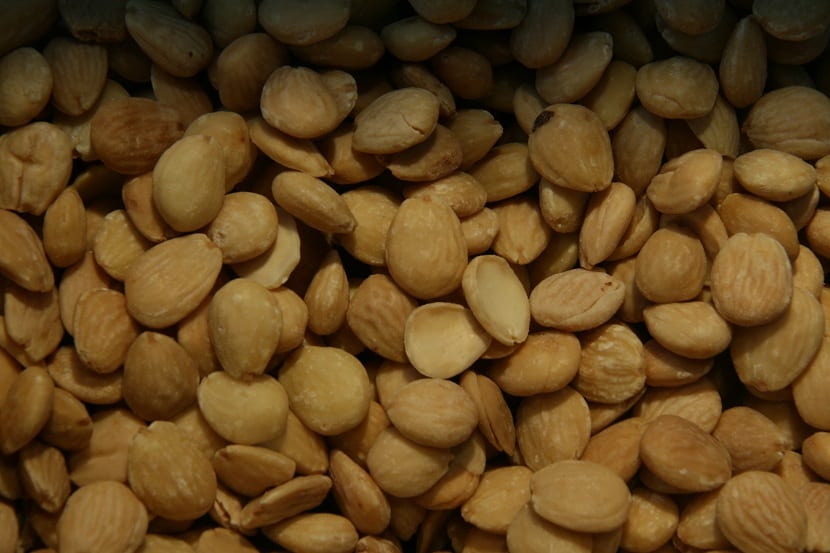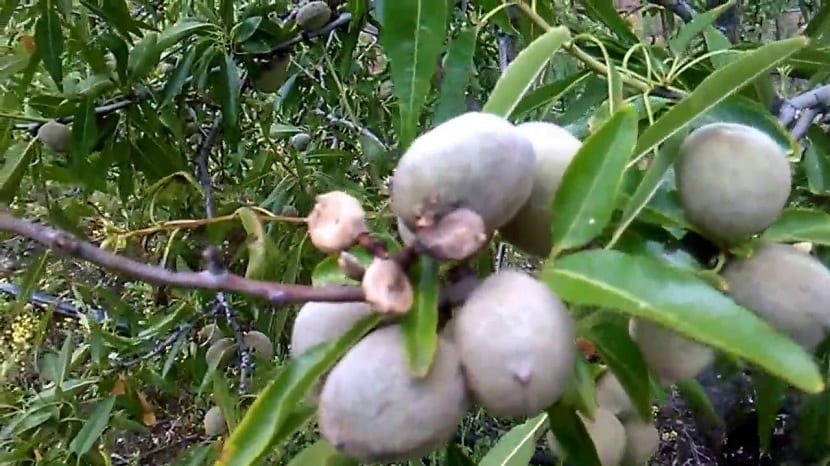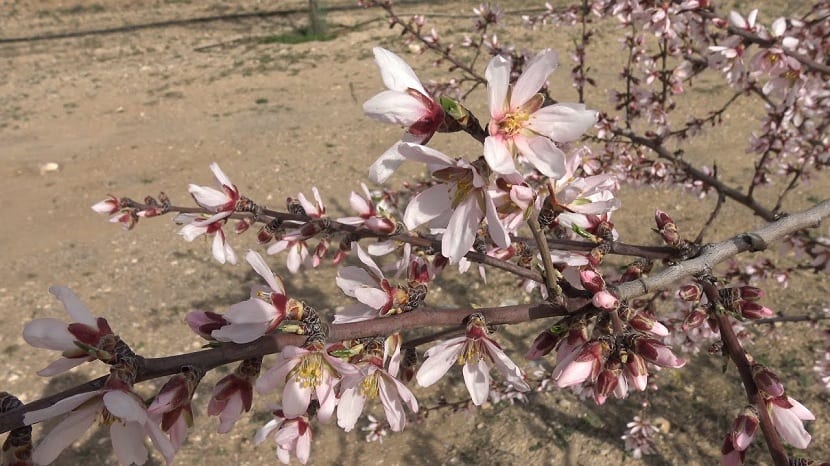
In Spain, more varieties of almonds of life are cultivated, said great genetic wealth that we have. However, there are five types that are more well defined for trade and are selected from the highest quality varieties. One of these varieties is marcona almond. This species is native to Spanish and botanically pure. They are marketed throughout the peninsula and even in the Balearic and Canary Islands.
In this article we are going to tell you the characteristics of the marcona almond and how to grow it.
Key features

The almond tree belongs to the Rosaceae family and its botanical name is Prunus amygdalus Basch. It has a root system made up of a few larger roots that form both the breadth and depth. From these larger roots there are successive branches that form the entire root skeleton of the tree. The smallest roots are very long, finer and more tender. In turn, they have root hairs to better capture water and moisture. These plants They have adapted to dry environments so they do not need much precipitation.
As for the trunk, when it is younger it tends to be smooth and, as they grow, they become more cracked. This cracking is characteristic of this species. At first, the bark is green, but when the tree is more adult it turns brown and grayish. It has echo blades of the flying lance type, long and pointed. They are leaves smaller than those of the peach tree and sometimes intense green in color. The edges are jagged.
The flower is pentameric and has five petals with varying colors between white and pink. Its fruit, the almond, is a more or less leathery drupe, exocarp and mesocarp and a hard endocarp. It is a species that requires cross pollination. In order to have a high or harvest success, pollinators must be placed. There are times when a common wild almond cross-fertilization occurs, which usually has bitter almonds, and ends up giving bitter almonds.
Uses and importance of the marcona almond

The marcona almond has an exceptional quality due to its higher oil content and smooth texture. This makes it juicier and has a more intense flavor. It is the most expensive variety and most demanded by the confectionery and nougat industry. It can be cost to acquire the desired tone in the elaboration of hard or soft nougat. It has been used to make the Jijona and Alicante designations of origin as well as for the quality designations of marzipan from Toledo.
On the other hand, we have the Largueta variety. This is longer and narrower than marked it for being the variety used by manufacturers of snacks and appetizers. It is a more common almond but it still has an appreciable genetic wealth.
The most common preparation of these almonds is simply to bake them with salt. The salt is used to stay on the skin from entering the rest of the almond with a good flavor. It can also be used for other typical Christmas sweets, in chocolates, pralines and in dumplings.
Within the market for nuts, almonds undoubtedly occupy the first place both nationally and internationally. Its importance lies in the valuation of the marginal lands, since they hardly need maintenance. Thus, You can take advantage of land that has been abandoned by the rural exodus. Local industries also make use of these resources for ecological reasons. If production is carried out on a local scale, thousands of tons of greenhouse gas discharges into the atmosphere are saved. In addition, you can improve the price and compete in the markets.
Marcona almond requirements

It is a very rustic species so it can survive extreme conditions. This helps lower production costs as maintenance is almost minimal. In hot areas it can survive very high temperatures with almost no precipitation and can tolerate cold.
It needs a long period for the fruit to ripen. This results in a long flowering period. The money starts and it may take between 7 and 8 months to collect it. We can produce marcona almond trees with only an average rainfall of 300 mm but profitability is assured from 600mm.
For pollination to take place in good conditions, it is necessary to take into account various climatic factors that may affect bees. As for the soil, it prefers loose and sandy soils although it is capable of growing together with vegetation on loamy textured soils. They do not survive well those soils that do not have good drainage, so they get flooded when rainfall is abundant in a short period of time. The almond tree does not resist root fission due to water depletion.
There are various pests like la armillaria and Phytophthora that usually attack these specimens.
Genetic improvements of the marcona almond
To satisfy the demand for this type of almond in the different sectors of the food industry, different techniques have been used in the genetic improvement of the almond tree. One of these techniques is the use of stylized ribonucleases and incompatibility alleles. With these thermals, crosses between commercial plantations that have known genetypes can be designed and then the offspring with the best genes that are more productive are selected.
The objective of this genetic improvement has the different benefits:
- An improvement of the compatibility between crosses is achieved.
- Flowering density increases so production increases rapidly.
- Improve productivity and profitability.
- Facilitates pruning.
- The almond tree can tolerate adverse conditions such as frost, drought and cold, among others.
- Greater resistance to pests and diseases.
- Better characteristics of the seed like absence of double seeds, and improvement of the quality of the texture.
- Different periods of maturation.
- The hardness of the peel and the performance of the peeling ensure that the rupture of the peeling process is avoided.
- Facilitates collection.
As you can see, the marcona almond is one of the most demanded in the entire market. I hope that with this information you can learn more about this species.
It is really a reality that of this almond, the marcona has advantages over any other due to
which is very positive in yield, lasts almost the whole year with branches still green in the months of NOVEMBER
and DECEMBER, it is a very hard plant, the cold does not affect them, I only have 8 almond trees planted because
the orchard where I have my grove of fruit trees, I never thought of putting almond trees but I am a person
I like diversity, I have almost all the fruits, AZOFAIFO, NARANJO MANDARINO, NAVELATE,
NISPEROS, DUMMY KAKIS, BRIGHT RED KAKIS, SHARON, APPLES ROYAL GALA, GOLDEN
DELICIUS, WAX DROP APPLE, LEMON TREE, WALNUTS 3, FIGS 8, VERDAL, MUÑIGAL, WHITE
DE GOTA HONEY, NEGRA BREVAL, PANACHE, OLIVE TREE OF CORNEZUELO, OLIVE TREE OF MANZANILLA CACEREÑA, GORDAL, PEAR OF CONFERENCE, PERA WHITE, PERA SAN JUANERA, PERA ERCOLINI, PARRAS DE MOSCATEL DE ALEJANDRIA, SAUVIGNON, SAUVIGNON
CALANDA PEACHES, PARAGUAYOS, NECTARINES, APRICOT 6 PLANTS, QUINCES
LAUREL, 4 GRANADOS DE ELCHE, HAZELNUT CORDOBES, CIRUELO CLAUDIA BLANCA, GOLDEN JAPAN
BURLAT TARDIA, SONATA, SUMMIT, I have seedlings of CHIRIMOYAS, PISTACHIOS, 1 ACEROLO, in short some
trees that keep me always busy, pruning, arrangements of stems and shoots, I would still like to be able to put some
30 more trees, but all of the indigenous land, such as apple trees, pear trees, peach trees, among others.
Hi John.
Incredible that variety of fruit trees. Surely you have a spectacular garden 🙂
Regards!